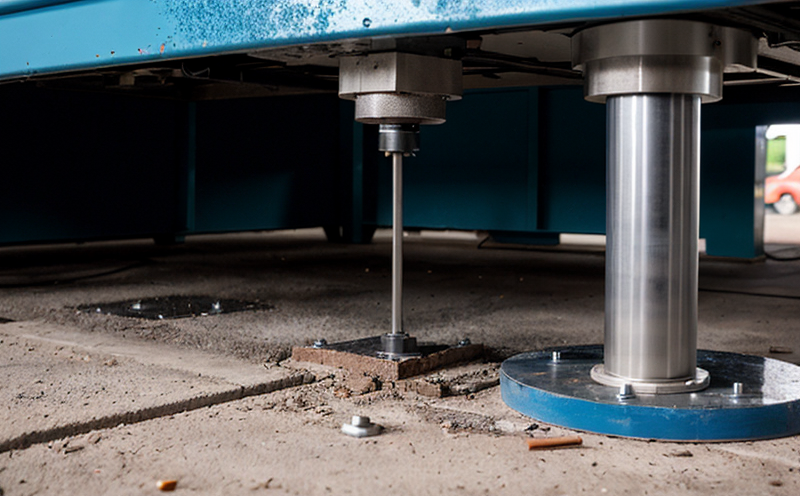ASTM E837 Residual Stress Measurement by Hole-Drilling Method
The ASTM E837 standard provides a method to measure residual stress in metals and other materials using the hole-drilling technique. This non-destructive approach is particularly useful for evaluating the internal stresses within components that are critical for performance, safety, or reliability.
Residual stresses can arise during manufacturing processes such as forging, welding, casting, cold working, heat treatment, and machining. They influence how materials behave under load, potentially leading to early fatigue failure or deformation. The hole-drilling method is sensitive enough to detect these internal stresses, making it a valuable tool for quality assurance in industries like aerospace, automotive, medical devices, and construction.
The ASTM E837 method involves drilling small holes into the surface of the test specimen, followed by measurements of the displacement or strain at the hole's edges. These displacements are then used to calculate the residual stresses using specific equations derived from Hooke's Law.
Specimens prepared for this test typically include flat plates, cylinders, and complex geometries. The drilling process must be precise to ensure accurate stress measurements. After drilling, strain gauges or other displacement sensors are attached around the drilled holes. Once the data is collected, it undergoes detailed analysis using specialized software.
Quality managers and compliance officers rely on this method to ensure that parts meet stringent design specifications and regulatory requirements. R&D engineers benefit from the insights gained into material behavior under stress, helping them optimize designs for strength and durability.
| Applied Standards |
|---|
| ASTM E837-21 |
| ISO 10529 |
The ASTM E837 method is widely accepted in the aerospace, automotive, and medical sectors. It is particularly useful for evaluating parts that are subjected to high loads or temperatures during operation.
Applied Standards
| Standard | Description |
|---|---|
| ASTM E837-21 | Standard Practice for Measurement of Residual Stress in Metals by Means of the Hole Drilling Technique. |
| ISO 10529 | Guidelines for the Use of Ultrasonic Testing to Determine Residual Stresses in Welded Joints and Other Structures. |
The ASTM E837 standard is widely recognized within the industry, providing a robust framework for measuring residual stress. The hole-drilling technique allows for precise determination of internal stresses without compromising the integrity of the component being tested.
Quality and Reliability Assurance
The ASTM E837 method plays a crucial role in quality assurance programs by providing objective data on residual stress levels. This information is essential for identifying potential weaknesses in manufacturing processes or material selection that could lead to premature failure.
By incorporating ASTM E837 testing into their workflows, companies can enhance product safety and reliability. For example, aerospace manufacturers use this method to ensure that critical components like engine parts are free from excessive internal stresses that could compromise flight safety.
The technique also supports compliance with industry-specific regulations such as FAA 14 CFR Part 21 or EU Medical Device Directive (MDR) requirements. Accurate residual stress measurements contribute significantly to the overall quality and reliability of products, thereby reducing recalls and enhancing customer satisfaction.
International Acceptance and Recognition
- Aerospace industry: ASTM E837 is widely used in aircraft component manufacturing to ensure high-strength materials are free from harmful internal stresses.
- Automotive sector: This method helps automotive manufacturers verify that critical components such as engine blocks or transmission housings meet stringent stress requirements.
- Medical device field: ASTM E837 is utilized to assess the integrity of orthopedic implants and other medical devices subjected to mechanical loads during use.
The ASTM E837 method enjoys global recognition, with many international standards organizations endorsing its application. Its acceptance in various sectors underscores its reliability and effectiveness as a tool for residual stress measurement.





